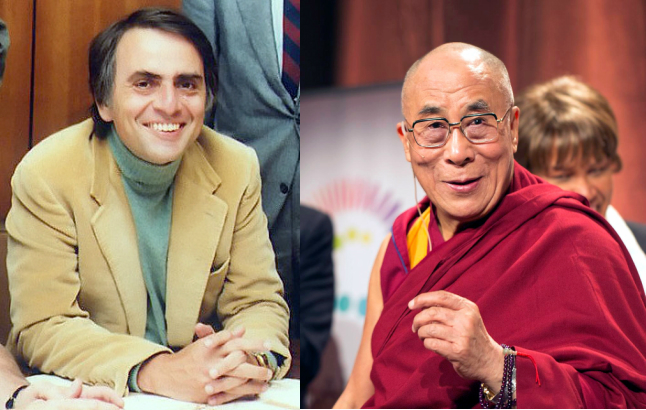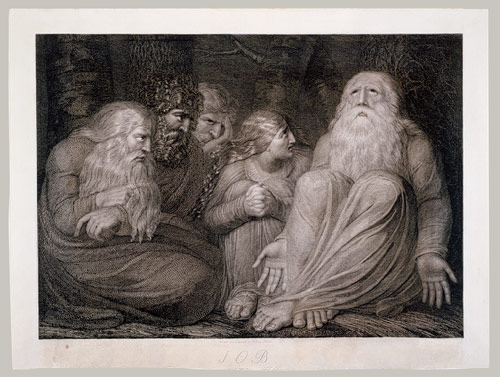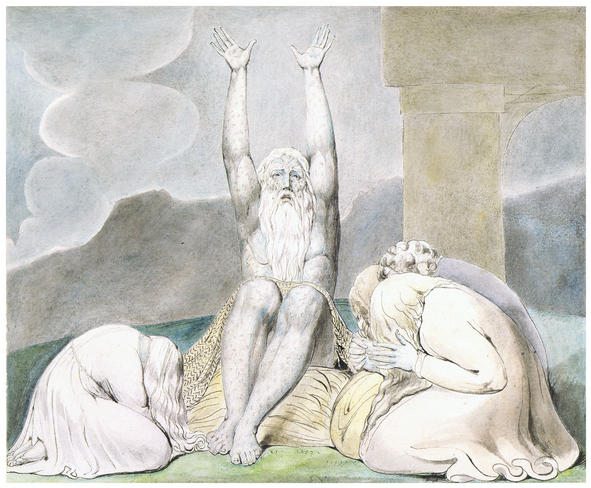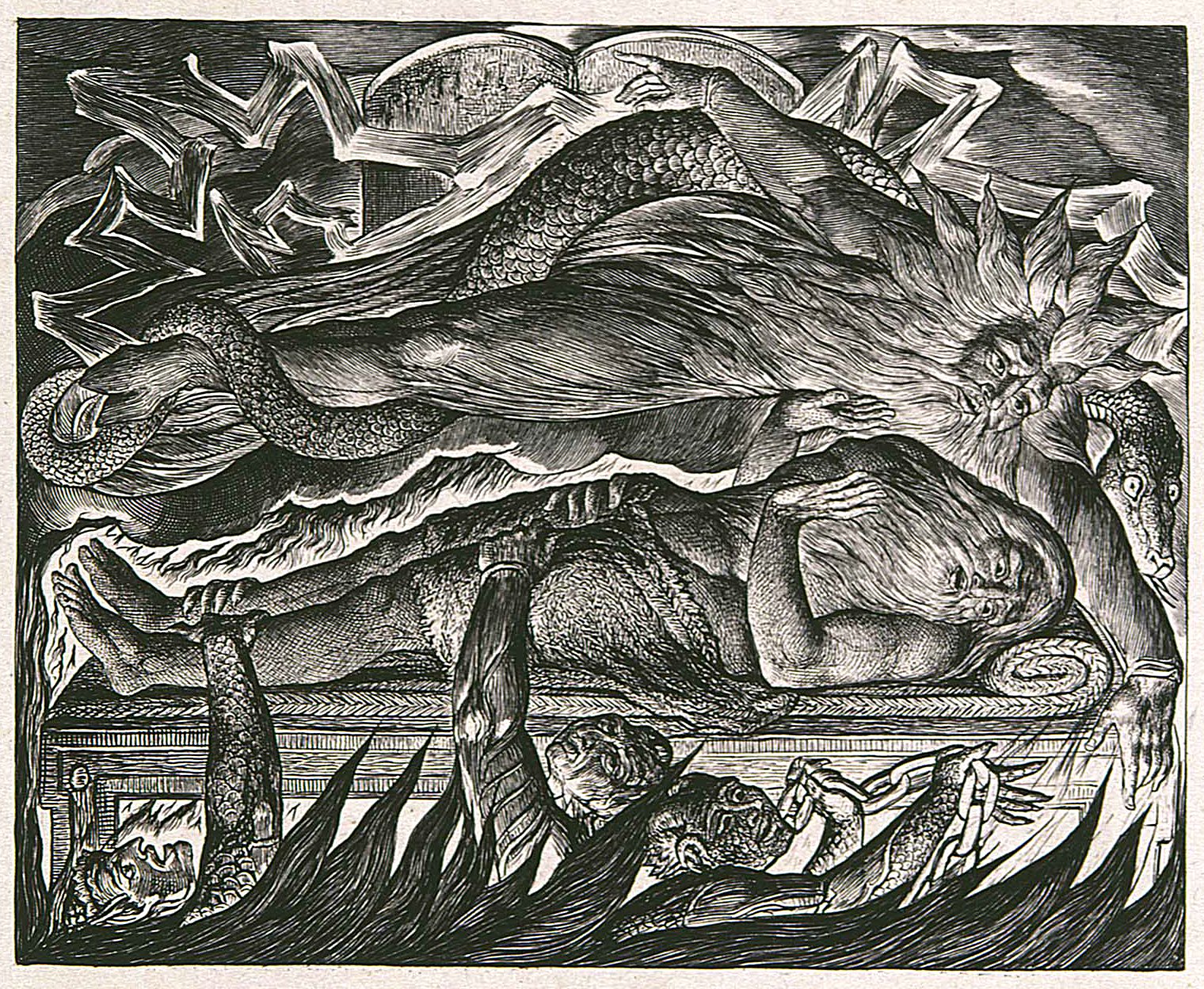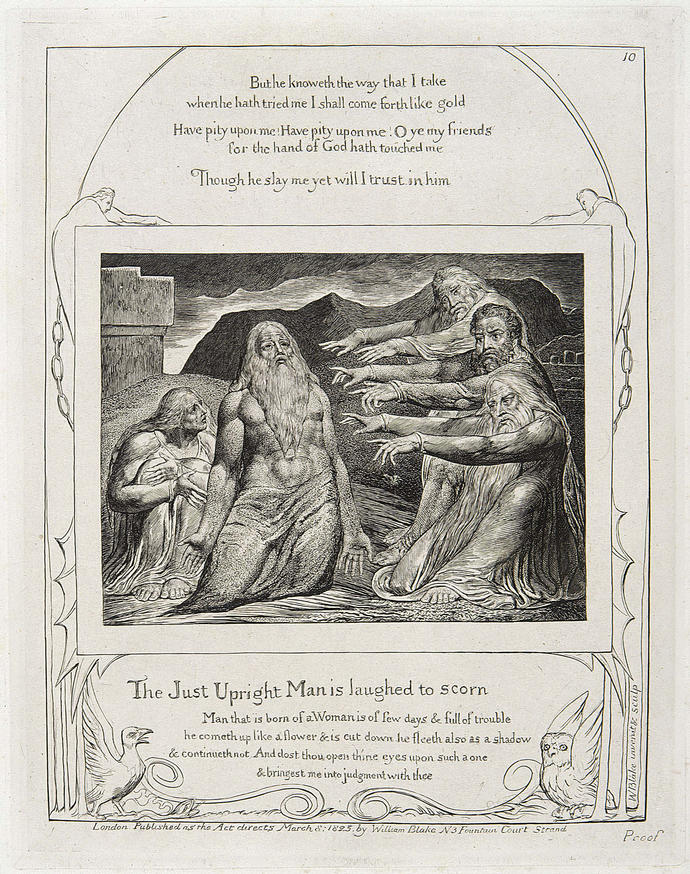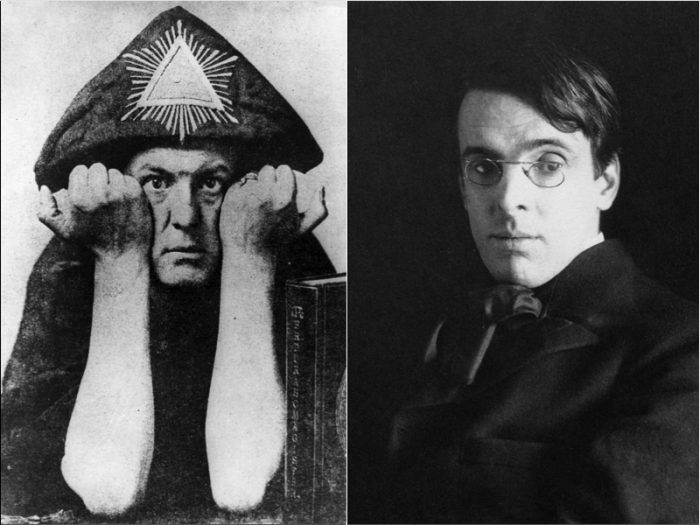
Aleister Crowley—English magician and founder of the religion of Thelema—has been admired as a powerful theorist and practitioner of what he called “Magick,” and reviled as a spoiled, abusive buffoon. Falling somewhere between those two camps, we find the opinion of Crowley’s bitter rival, the Irish poet William Butler Yeats, who once passionately wrote that the study of magic was “the most important pursuit of my life….. The mystical life is the center of all that I do and all that I think and all that I write.”
Crowley would surely say the same, but his magic was of a much darker, more obsessive variety, and his success as a poet insignificant next to Yeats. “Crowley was jealous,” argues the blog Rune Soup, “He was never able to speak the language of poetic symbol with the confidence of a native speaker in the way Yeats definitely could.” In a 1948 Partisan Review essay, literary critic and Yeats biographer Richard Ellmann tells the story differently, drily reporting on the conflict as its participants saw it—as a genuine war between competing forms of practical magic.
Having been ejected from the occult Theosophical society for his magical experiments, writes Jamie James at Lapham’s Quarterly, Yeats joined the Hermetic Order of the Golden Dawn, “an even more exotic cult, which claimed direct descent from the hermetic tradition of the Renaissance and into remote antiquity.” At various times, the order included writers Arthur Machen and Bram Stoker, Yeats’ beloved Irish revolutionary Maud Gonne, and famous magicians Arthur Edward Waite and Crowley. (Just below, see a page from Yeats’ Golden Dawn journal. See several more here.)
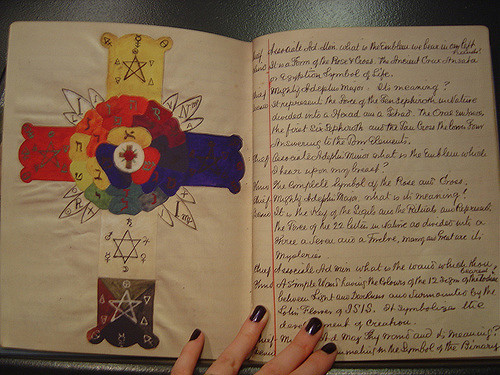
“When Crowley showed a tendency to use his occult powers for evil rather than for good,” Ellmann writes, “the adepts of the order, Yeats among them, decided not to allow him to be initiated into the inner circle; they feared that he would profane the mysteries and unleash powerful magic forces against humanity.” Crowley’s ouster lead to a confrontation in 1900 that might make you think—depending on your frame of reference—of the warring magicians on South Park or of Susanna Clark’s Jonathan Strange & Mr. Norrell, or both. “Crowley refused to accept their decision,” writes Ullmann, and after some astral attacks on Yeats,
.… in Highlander’s tartan, with a black Crusader’s cross on his breast… Crowley arrived at the Golden Dawn temple in London. Making the sign of the pentacle inverted and shouting menaces at the adepts, Crowley climbed the stairs. But Yeats and two other white magicians came resolutely forward to meet him, ready to protect the holy place at any cost. When Crowley came within range the forces of good struck out with their feet and kicked him downstairs.
This almost slapstick vanquishing became known as “the Battle of Blythe Road” and has been immortalized in a publication of that very name, with accounts from Crowley, Yeats, and Golden Dawn adepts William Westcott, Florence Farr and others. But the war was not won, Ellmann notes, and Crowley went looking for converts—or victims—in London, while Yeats attempted to stop him with “the requisite spells and exorcisms.” One such spell supposedly sent a vampire that “bit and tore at his flesh” as it lay beside Crowley all night. Despite Yeats’ supernatural interventions, one of Crowley’s targets, a young painter named Althea Gyles, was “finally forced to give way entirely to his baleful fascination.”
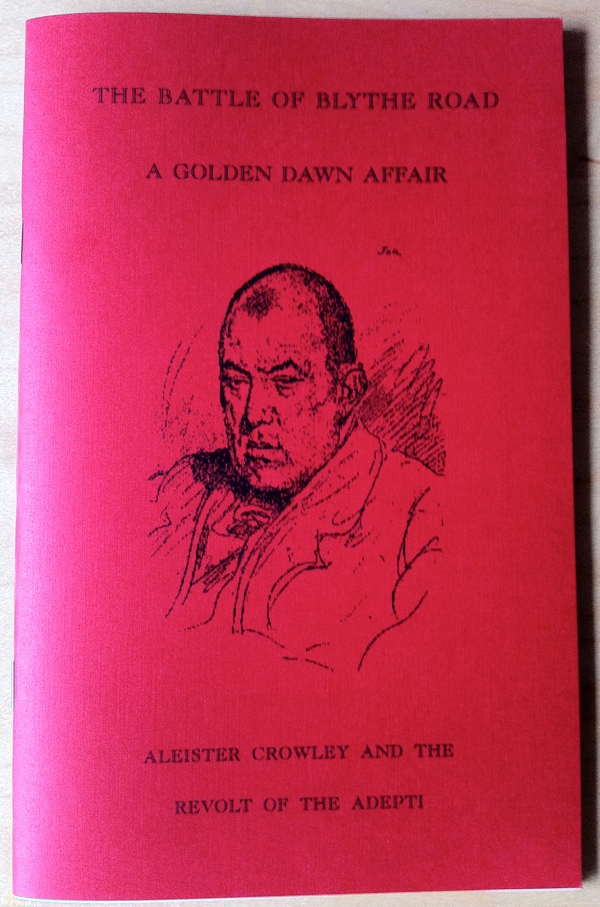
Ellmann’s both humorous and unsettling narrative shows us Crowley-as-predator, a characterization the wealthy Englishman had apparently earned, as “responsible governments excluded him from one country after another lest he bring to bear upon their inhabitants his hostile psychic ray.” [Brenda Maddox at The Guardian gives a slightly different account of the Battle, in which “Yeats, with a bouncer, saw him off the premises, called in the police and ended up (victorious) in court.” ] Yeats and the other members’ distaste for Crowley surely had something to do with his predatory behavior. But the rivalry was also indeed a poetic one, albeit extremely one-sided.
As Crowley biographer Lawrence Sutin writes, “the earnestness of the young Crowley could not compensate, in Yeats’ mind, for the technical difficulties and rhetorical excesses of his verse.” Yeats’ opinion “infuriated Crowley,” who indulged in the magic of projection, writing “What hurt him [Yeats] was the knowledge of his own incomparable inferiority.” Crowley’s remarks are both “ridiculous,” Sutin comments, and apply “far more convincingly to Crowley himself.” Nevertheless, Crowley’s “Magick,” continued to make Yeats uneasy, and he may have invoked Crowley in his famous line about the “rough beast” slouching toward Bethlehem in 1919’s “The Second Coming.”
While the magical battle between them might provoke more laughter than curiosity about their different brands of magic, Sutin notes a crucial difference that distinguishes the two men: “whereas Crowley placed himself in the services of the Antichrist ‘the savage God’ of the new cycle, Yeats’s fidelity was to ‘the old king,’ to ‘that unfashionable gyre.’” The gyre, so central an image in “The Second Coming,” stands for Yeats’ theory of time and history, and it belongs to an old mysticism and folklore that for him were synonymous with poetry.
Crowley viewed the occult as a source of personal power—his revelations filled books devoted to explaining the philosophy of Thelema (“Do what thou wilt shall be the whole of the Law. Love is the law, love under will); ” Yeats was certainly more of an “organization man… in his occult activities,” writes Maddox, and sought to practice magic as a holistic activity, fully integrated into his social, political, and aesthetic life. His “public philosophy,” as he called it, writes James, “propounds an extraordinarily convoluted system that aims to integrate the human personality with the cosmos.”
To understand Crowley’s magical thinking, we can probably skip his poetry and attempt as best we can to the decipher his several arcane, technical books full of invented terms and symbols. To understand Yeats, as much as that’s possible, we need to read his poetry, the purest expression of his mystical system and symbolic thought.
Related Content:
Rare 1930s Audio: W.B. Yeats Reads Four of His Poems
W.B. Yeats’ Poem “When You Are Old” Adapted into a Japanese Manga Comic
Josh Jones is a writer and musician based in Durham, NC. Follow him at @jdmagness
